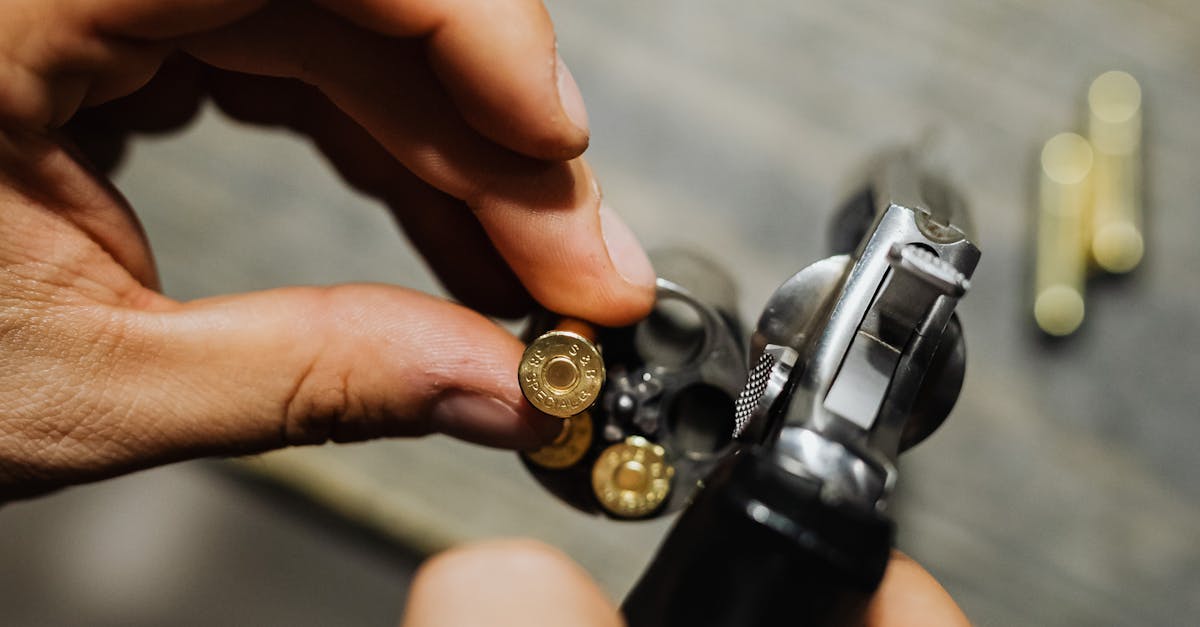Bird Feeders - Project That Benefits You And The Birds
Create bird feeders with your kids using household items like egg cartons or milk jugs, or opt for pre-fabricated kits for a more polished look. Enjoy this fun, educational project while helping local birds with the right feed for their species. Build backyard decorations and bond with your family as you learn about nature and support feathered friends this spring.
Read MoreNight Vision Devices - The Ultimate in Back Country Toys
Discover the world of night vision devices (NVD) and their applications in backcountry adventures. Learn the differences between Image Enhancement and Thermal Imaging, the various generations of NVD, and how outdoor enthusiasts, from campers to hunters, can benefit from night vision technology. Explore uses in camping, hiking, wildlife observation, and more.
Read MoreGiant Sequoias – Hiking Boole Tree Loop
Explore the Giant Sequoias on the Boole Tree Loop in California’s Giant Sequoia National Monument. This 2.5-mile trail winds through towering trees and historical stumps like the 70-foot-wide Chicago Stump. Located near Sequoia and Kings Canyon National Parks, the Boole Tree Loop offers stunning views, including Spanish Mountain and canyon valleys. Discover Boole Tree, one of the oldest and tallest living sequoias, saved by a lumber owner over 2,000 years ago. A must-visit for nature lovers seeking a glimpse into ancient forests and California’s scenic landscapes.
Read MoreCamping Makes the Weekend Perfect.
Discover the joys of weekend car camping, the perfect way to unwind and connect with loved ones in nature. Car camping allows you to bring all the essentials for a comfortable outdoor escape—no need to leave the luxuries behind. Load up your vehicle with camping gear, food, and entertainment, and head to your favorite spot. Whether it’s in a designated campground or on public lands, car camping brings relaxation, adventure, and quality time away from everyday distractions.
Read MoreBird Watching Presents
Find the perfect Christmas gifts for bird watching enthusiasts with these thoughtful ideas. From electronic bird identifiers to bird watching journals, and even the multi-functional Trek Pod, these presents make birding more enjoyable. Discover options like Bird Watcher’s Digest for insider tips and Nomad Bird Watching Journals for documenting sightings. Ideal for beginners and experienced bird watchers alike, these gifts combine practicality and passion for nature.
Read MoreAfrican Safaris - Where To Go?
Explore the breathtaking options for an African safari, from Kenya’s wildebeest migrations and Uganda’s gorilla treks to South Africa’s open-vehicle safaris and Botswana’s abundant wildlife. Experience spectacular landscapes like Mount Kilimanjaro, the Ngorongoro Crater, and Victoria Falls, or wrap up your adventure with snorkeling and diving in the Indian Ocean islands. Whether you're into game viewing, cultural experiences, or marine adventures, Africa has it all for a memorable safari experience.
Read MoreTurkey Hunting
Turkey hunting, a popular North American tradition, often involves using a bow and arrow or shotgun to hunt turkeys that are lured from their roosts. Hunters should start by locating a turkey roost and setting up at a distance of 100 to 200 yards away. Using a series of turkey calls—such as clucks, yelps, and purrs—can draw the birds closer. Hunters should avoid confusing turkey calls with those of other birds to prevent attracting unwanted predators. Once within range, it's crucial to take a shot carefully, mark the kill, and avoid pursuing scattering birds. Always check local regulations before hunting, as many areas have restrictions on wild turkey hunting.
Read MoreThe Nature-Friendly Hunter
A nature-friendly hunter aims to leave the environment as undisturbed as possible, treating it as a guest in the animals' habitat. Ensure campfires are fully extinguished and buried to prevent forest fires. Bury bodily waste to maintain the natural balance. Always pack out all trash and pack food in airtight containers to avoid attracting wildlife. When installing tree stands, use mature trees and avoid cutting branches. Stay alert to weather changes and potential hazards like aggressive animals or stowaways in gear. Teach children to respect nature and model good environmental practices to ensure hunting's future.
Read MoreSurvival Tips for The Hunter
For survival in the wild, carry essential items including a compass, maps, flashlight with extra batteries or a shake-powered light, waterproof matches, and a sharp knife. Bring non-perishable food like granola and dried fruit, and ensure you have drinking water, as humans can only survive a few days without it. A needle and thread can be used for repairs and first aid. Carry a six to eight-foot rope for multiple uses, including first aid and shelter building. Always follow fire safety guidelines by ensuring fires are completely out, using a fire pit lined with stones, and gathering kindling and logs carefully.
Read MorePicking the Best Rifle
Choosing the right rifle is crucial for a successful hunt and involves several key considerations. First, match the rifle type—bolt-action, lever-action, semi-automatic, or pump-action—to your hunting environment and prey. For dense brush, a quick-loading and lightweight rifle is ideal, while a bolt-action rifle offers better control for long-range shots. For smaller, skittish animals, a semi-automatic rifle is more suitable. Additionally, prioritize comfort, strength, and accuracy in your rifle selection, and seek features like adjustable triggers for enhanced usability. Once purchased, familiarize yourself with the rifle, its ammunition, and proper safety and storage practices to ensure safe and effective use.
Read Morehunting safety
Hunting, despite its evolution and popularity, remains a dangerous activity requiring strict safety measures. Key practices include ensuring the gun's muzzle always points away from yourself and others, with various carrying methods like side carry, ready carry, sling carry, shoulder carry, and trail carry each offering different safety advantages. Establishing a “zone of fire” helps prevent accidents between hunters. When hunting from a boat, ensure guns are unloaded and properly positioned, and anchor the boat before shooting. Practice at shooting ranges involves commands like “the range is hot” and “cease fire” to maintain safety and readiness.
Read MoreHunting Safely
Hunting offers excitement but demands rigorous safety practices. Always plan your trip meticulously, informing others of your whereabouts and leaving detailed directions in case of emergencies. Inspect and clean your weapon regularly, carry a first aid kit, and consider bringing a cell phone for emergencies. In the woods, wear orange safety gear to ensure visibility to other hunters, and use safety tape around decoys. Exercise caution when tracking wounded game, avoid approaching head-on, and be aware of potential hazards like bears and snakes. Prioritize safety to ensure a secure and enjoyable hunting experience.
Read MoreHow to Skin a Deer
Skinning a deer is a straightforward process that takes about 10-15 minutes and relies on leveraging body weight and a sharp knife. Start by hanging the deer, either by the neck or legs, to facilitate skinning and keep the meat clean. Make initial incisions around the tendons and joints, then use your body weight to snap the legs and create leverage. Peel the skin away like removing a tight jacket, following the natural separation between skin and muscle. The process becomes easier if done shortly after the deer's death, thanks to the natural membranes separating the skin from the meat.
Read Morehow to have a successful turkey hunting season
Turkey hunting requires different permits for spring and fall seasons, with spring permits covering specific 5-day periods and fall permits allowing hunting any day within the zone. Patience is essential, with spring hunting involving turkey calls and fall requiring stand hunting. Familiarize yourself with various turkey calls and practice diligently while learning from live turkeys or recordings. Prioritize safety by using gobble calls cautiously, keeping camouflaged, avoiding stalking, and following basic hunting rules: treat every gun as loaded, point the muzzle safely, and be certain of your target. Adhering to these guidelines ensures a successful and safe hunting season.
Read Morehow to choose the perfect gun for turkey shooting
As the spring turkey-hunting season approaches, finding the right shotgun is essential. To select the perfect fit, visit a firearms expert and test the shotgun's balance, weight, and comfort. While larger shotguns might seem appealing, a well-fitted 20-gauge shotgun with high-powered loads and appropriate chokes is often more effective. Practice is key—experiment with different loads, chokes, and shooting scenarios to understand your shotgun's performance and your own limitations. By investing time in this process, you'll be well-prepared for a successful and safe turkey hunting season with a shotgun that feels like an extension of yourself.
Read MoreHemingway on Safari
Ernest Hemingway, known for his adventurous lifestyle, ventured to Africa twice, with his safaris influencing some of his famous works, such as "The Green Hills of Africa," "The Short Happy Life of Francis Macomber," and "The Snows of Kilimanjaro." His first trip in 1933 introduced him to African culture and wildlife, while his 1954 safari, marked by near-fatal plane crashes, inspired his semi-autobiographical book "True at First Light." Modern safaris often attempt to replicate Hemingway's experiences, offering luxurious tours through African landscapes, though these come at a steep cost, reflecting a controlled and comfortable experience far removed from Hemingway's rugged adventures.
Read MoreFirst Aid For Hunting Safety
Hunting safety requires preparedness, including knowledge of basic first aid and CPR to handle potential injuries or life-threatening situations in the wild. Key steps include ensuring the accident scene is safe, checking the victim's airway, breathing, and circulation (the ABCs of first aid), and applying pressure to bleeding wounds. If a spinal injury is suspected, avoid moving the person unless absolutely necessary, and provide rescue breathing if needed. Using firearm safety, avoiding aggressive animals, and hunting with others can prevent accidents. Always inform someone of your hunting plans and expected return to enhance safety in the woods.
Read MoreDisease and Hunters
Hunters face various disease risks in the outdoors, from mosquito-borne arboviral diseases like West Nile virus to bacterial infections such as brucella and Lyme disease, which is commonly transmitted by tick bites. These illnesses can pose serious health threats, emphasizing the importance of taking precautions such as using bug spray, proper meat handling, and wearing appropriate clothing to minimize exposure. While some view these diseases as nature's defense against human interference, the potential for these afflictions to spread to hunters' families further underscores the need for vigilance. Careful planning and awareness of local risks are crucial for a safe hunting experience.
Read MoreThe Problem with Canned Hunting
Canned hunting, a highly controversial practice, involves hunters being guaranteed a kill within an enclosed area where animals are essentially trapped, leading to widespread criticism for its cruelty. Animal rights groups and ethical hunters alike condemn it for stripping away the essence of fair chase, reducing hunting to mere slaughter. The United States has attempted to regulate canned hunting through legislation, but enforcement and definitions remain unclear. High-profile figures, such as former Vice President Dick Cheney, have been involved in such hunts, further fueling the debate. Overall, canned hunting is widely shunned for its brutal disregard for animal welfare.
Read Morehow to choose the right bow for hunting
Choosing the right bow is crucial for bow hunters and should be treated like selecting quality hunting boots. Test various bows to find one that fits comfortably, matches your body type, and aligns with your shooting style. Eye dominance plays a key role in selecting between left-hand and right-hand bows; check which eye is dominant to improve accuracy. Consider important factors such as draw length, draw weight, and reputable brands offering solid warranties. A bow from a reputable company with good customer service and a lifetime guarantee is ideal. Proper selection ensures improved accuracy and a more enjoyable hunting experience.
Read MoreWhy Is Sand Such An Important Part Of Your Aquarium?
Sand beds in aquariums offer significant benefits, providing a more natural habitat for fish and enhancing their well-being, sometimes even encouraging spawning. While live sand with beneficial microorganisms helps maintain water quality and requires minimal maintenance, different types of sand—such as aragonite, silica, coral, and black beauty—each serve specific purposes. Proper cleaning of sand is essential but straightforward, involving rinsing to remove dust and particles. Overall, sand enhances the tank's appearance and creates a more authentic environment for aquatic
Read MoreTropical Fish and Aquariums
The hobby of keeping tropical fish has grown significantly since the mid-20th century, shifting from replicating natural environments to managing a balanced, artificial ecosystem. Tropical aquariums come in saltwater and freshwater varieties, each requiring specific conditions and careful maintenance. Modern rectangular glass tanks, often with live plants and decorations, have largely replaced old-fashioned fish bowls. Properly maintained, these tanks balance the needs of fish and plants, resulting in a healthy and attractive display. Overall, the key to a thriving aquarium is understanding and managing the complex interactions between its inhabitants.
Read MoreReef Aquarium
Choosing a reef aquarium setup is complex, requiring careful selection of delicate corals, anemones, and compatible reef fish, while avoiding species like puffer fish, crabs, and shrimps that can harm the ecosystem. Anemones, with their unique feeding method, add to the allure of the setup. Maintaining proper PH, salt levels, and temperature is crucial for the health of the reef; failure to do so can be fatal. Special lighting enhances the beauty of the corals and anemones, creating a stunning, vibrant display. With the right care, a reef aquarium becomes a breathtaking underwater landscape.
Read MoreHow To Choose Your Tropical Fish
Choosing tropical fish involves understanding their temperaments. Social breeds like Danios, Tetras, and Guppies are compatible with most other fish. Semi-social breeds such as Barbs and Angelfish can be kept with similarly sized fish without aggression. Aggressive breeds, including Male Bettas and Oscars, should be housed alone or in pairs. Ensure fish from local pet stores have been quarantined for at least two weeks to avoid disease. Also, select fish with vibrant, well-defined colors and clear patterns for the best health and appearance.
Read MoreFreshwater Aquarium Fish
Maintaining a freshwater aquarium is simpler than a saltwater setup, requiring just a filter, heater, lights, and thermometer. After cycling the tank for a few weeks, it's ready for fish. Beginners might start with small fish for decorative purposes, but for a more engaging hobby, consider larger species like cichlids or Malawi's, which grow to substantial sizes. Different fish, such as African Malawi's and American cichlids, have specific water hardness and pH needs. Discus fish are beautiful but demanding, requiring precise conditions. Choose fish you like and are prepared to care for properly, as they need commitment and attention.
Read More
























